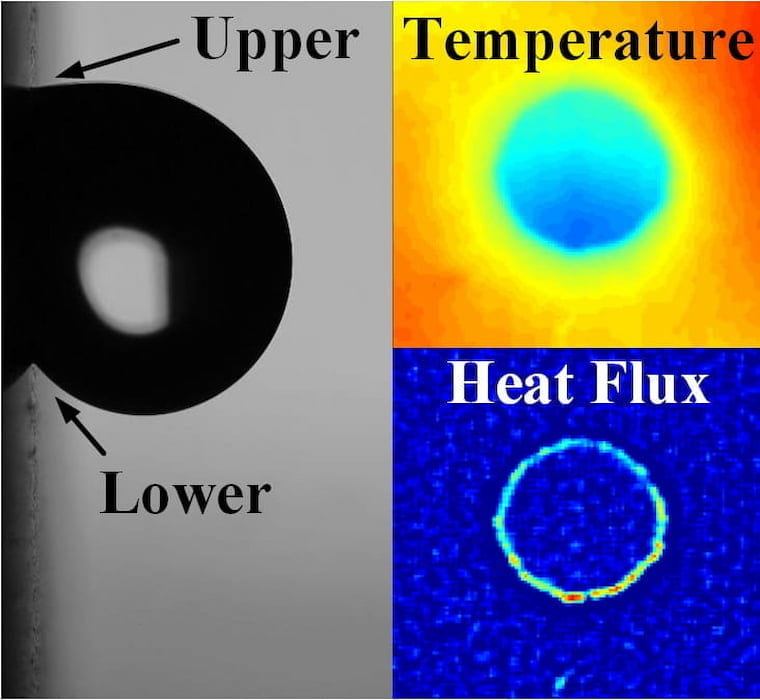Orientation-dependent evaporation (Langmuir)

This paper presents an experimental study on thermal transport to single water droplets evaporating on heated bi-phobic surfaces consisting of a superhydrophobic matrix with a circular hydrophobic pattern with strong contact line pinning. A single water droplet of 8 µl volume is placed on a preheated surface and allowed to evaporate in an open laboratory environment. We investigate the influence of substrate orientation (horizontal and vertical) on evaporation dynamics. Using optical and infrared imaging, we report droplet fluid dynamics and heat transfer characteristics of the evaporating droplet. Overall, evaporation is more efficient on the vertical surface, exhibiting higher total heat transfer rates and up to 10% shorter evaporation times. Counterintuitively, on the vertical surface, the substrate-droplet interfacial heat flux was higher near the lower contact line than in the upper region, despite a high contact angle and an expected wedge effect at the bottom. At the same time, the temperature is colder in the lower part of the droplet. We attribute this apparent anomaly to the competition between sensible heating and evaporation, and a modified convective flow signature (both within the droplet and the gas phase) compared to a horizontal surface. We also show that the thermal signature becomes uniform once the contact angles at the upper and lower contact lines become equal towards the end of the evaporation process. Insights from this work can guide the design of spray cooling devices, or be used to alter particle deposition patterns during evaporation-based fabrication techniques and ink-jet printing.